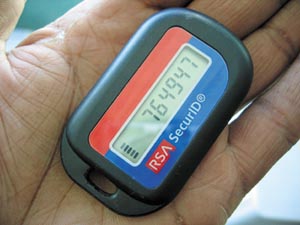Accessing a Virtual Private Network Remotely
|
| If you work in an office environment and tote your laptop between home, work, and travel locations, chances are you already know about Virtual Private Networks (VPNs). If you don't, you're in for a pleasant, productivity-enhancing surprise. A VPN allows certain authorized employees of a company to access its private network when they're not at the office. Virtual Private Networks work by using the Internet or other "public" carriers as a transit system for private network traffic, usually in encrypted form. You will find it to be indispensable in your travels.
Think of a company with multiple offices located around the globethe employees all need access to the same files and to each other, but of course allowing the entire world to access their network goodies is out of the question. A VPN allows them to operate as if they were all in the same office building. They can transfer files, use company databases, access their email, and print documents. How a VPN worksA VPN is secure; the data sent across the public Internet is encrypted, so that the data transferred is private. Using the Internet, two offices can merge their networks into one network by encrypting traffic that uses the Internet link. A good way to think about VPNs is as buildings connected by elevated walkways. That walkway allows the occupants of the buildings free access to one another while keeping out the people on the ground. A Remote-Access VPN is a type of VPN designed for the mobile or remote user, typically one who works for a large company with hundreds of people deployed in the field. To connect to a Remote-Access VPN you need an account and a password. Rather than assign a simple text password that might be easily cracked or guessed, many companies give their employees small hardware devices called fobs that can be carried on keychains. Each fob displays a new random number at regular intervals. To log into the VPN, the employee must enter both a previously assigned PIN (Personal Identification Number) as well as the number on the fob. This dual-authentication system ensures that only authorized users can connect to the VPN. There are various types of VPN implementations, so it's best to check with your network administrator to learn the particulars of your company's set up. This fob issues randomly generated security numbers and changes them regularly.
Once set up, VPNs are very easy to use and almost transparent to the user. CONNECTING TO A VPN
It's that simple. Once you are connected to the Internet, it's relatively simple to attach to a VPN network. Once connected, your computer has all the rights and privileges that you'd have if you were seated at your desk in the office. It's very liberating to be able to get work done from anyplace on the planet with Internet access, and that's a whole lotta places. REASONS TO CONNECT VIA VPNEmail is probably the most popular reason people connect to their networks via VPN. Many times it is not possible to retrieve your corporate email unless you are connected to the corporate network. VPN-ing into the network lets you retrieve and respond to email from your corporate email address instead of your personal email account (which reveals that you're not in the office). Utilizing corporate intranet resources is another reason why people VPN into their corporate networks. Accessing human resource information, downloading company software, or even checking to see how many vacation days you've got left are all possible while sitting in your hotel room once you've successfully VPN-ed into your corporate network. Another reason to VPN into a network is for server administration. I know this is a little geeky, but many network administrators are able to live relatively normal lives largely due to the freedom VPN affords them. They can VPN into the network to check the status of servers, install software on them, or otherwise control and maintain the network from wherever they happen to be. The Internet is the great liberator, and VPN unlocks it so that you can be just as productive sitting at an Internet café as you are in your mind-numbing cubicle. If you haven't done so already, contact your system administrator and have them set you up for VPN access. |
|
EAN: N/A
Pages: 78
